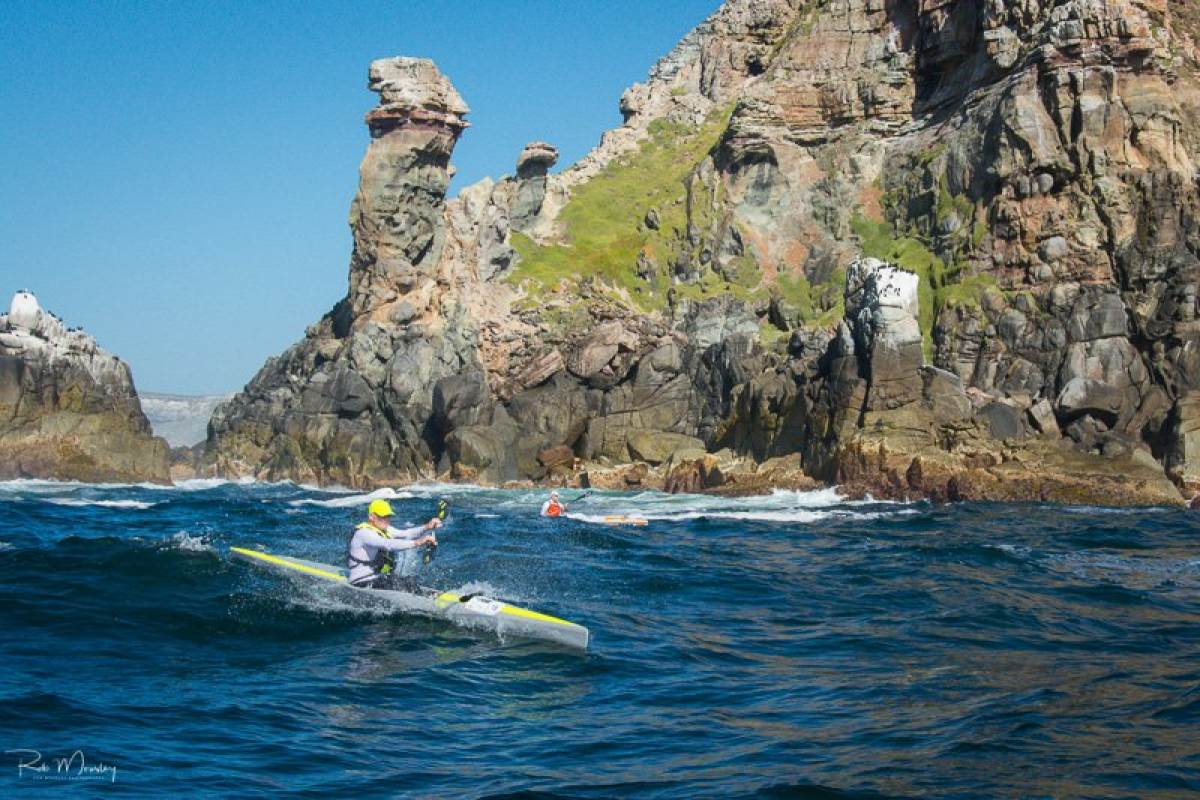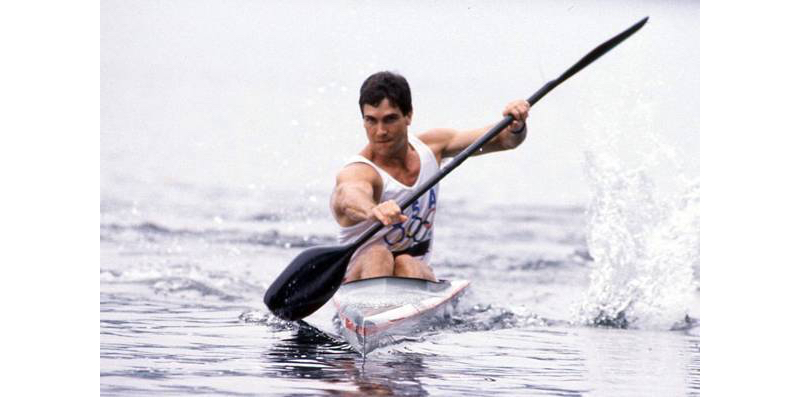To Feather or not to Feather?
 Oscar Chalupsky
Oscar Chalupsky
"There is no good reason to use feather angle on your paddle," said Oscar Chalupsky (in his usual assertive manner.) The surfski.info forum has seen something of a debate raging on this topic in the last couple of weeks; I knew that Oscar had been encouraging beginners to use zero feather, so I called him to ask for his views.
Back in the day...
"When I started paddling 45 years ago," he said, "we all had flat paddles and we all had 90-degree feather."
The goal of the 90-degree feather was to reduce wind resistance; the paddle out of the water is edge on to the wind. Nothing changed when wing paddles were introduced - even though the wing blades have a completely different dynamic and wind resistance.
In any case, for Chalupsky, consideration of wind resistance is trumped by the difficulties that beginner paddlers find with a feathered paddle.
"You watch," he said, "with a right-hand feather, paddlers, especially beginners, always brace on the left. And they fall into the water on the right! It's really difficult for a beginner to brace on the right because they have to twist their wrist and it takes a long time for them to become comfortable with it."
Many paddlers take years to develop their right-hand brace stroke - and some never do, he said.
Brace Stroke
To Chalupsky, the most important stroke to learn, ahead of anything else, is the brace stroke. "If you're bracing," he said, "you're not falling out. And if you're not falling out, you're paddling."
When he's coaching beginners, Chalupsky has a fines system. If the paddle is out of the water when they fall off, they get fined a beer. "I'm owed thousands of beers," he laughed.
Beginners find zero feather angle easier.
"The best thing to do is try it on novices," said Chalupsky. "Take three novices, give one a paddle with 50 degrees left, another with 50 degrees right and the third with zero degrees.
"I guarantee, the one with 50 degrees right feather will fall in to the right. The one with 50 degrees left, will fall in to the left. And the guy with zero degrees will paddle off without falling in.
"There is no upside to paddling with a feather angle - unless you spend all your time paddling upwind," he added. "Twisting your wrist is an act of energy consumption.
"When we used to do [the 4-day 250km] PE2EL Challenge, you could see it; the guys right hand wrists used to look like they had rope wrapped around under the skin. It really puts strain on your body."
Oscar himself is slowly working towards a zero-degree feather. But having 45 years of muscle memory to overcome is a challenge. He reduced his (left hand) feather angle in stages from 90 to 75 to 50 degrees and is now on 25 degrees.
Other Paddling gurus on Zero-angle Feather

So that's what a 90 degree feather angle looks like... "Way-back-when" shot of Olympian Greg Barton
Greg Barton
While researching this topic I googled it and found… an article that we published here on surfski.info back in 2010, from Epic Kayaks. It's still relevant too.
Barton says that most of the points raised in that article still apply. He added:
"There could be a biomechanical reason to have some (non-zero) feather angle. If you hold the shaft fixed with your pulling hand as the paddle exits and converts into a pushing hand on the next stroke, the shaft will naturally rotate. The lower your elbow, the greater the amount of induced feather.
He also made the point that a non-zero angled feather makes it easier to brace on the one side, harder on the other.
He went on to say: "Unfeathered may work well when paddling downwind. The blades could actually act as mini sails. Into the wind (or even flat water) there must be some penalty to paddling unfeathered (since the top blade travels at twice the speed of the ski). The question is how much is that penalty (certainly it is less with a wing paddle compared to a flat blade) and is it outweighed by biomechanical efficiencies? The drag difference of zero vs feathered blades would be a good project for a uni student with access to a wind tunnel."
Great point: calling all engineering (probably aeronautical engineering) students who are looking for an interesting project…!
Boyan Zlatarev
The legendary Boyan Zlatarev of Surfski Center Tarifa said that while he has been paddling with zero-angle for the last six months, he's not convinced that everyone will benefit from using zero-angle feather. He's planning on making a video about his thoughts... Stay tuned.
In Conclusion
The consensus is clearly that this is an open topic. It also seems that zero-feather may not suit everyone, but that large feather angles also aren't necessarily optimal. Zero-angle is easier to master when you're a novice, but it seems that at least some feather angle might be beneficial when paddling in windy conditions - and because of the possible "induced feather" mentioned by Greg Barton.
Left twist, right twist, zero-angle, some angle... one thing is true - most people don't use a 90 degree feather angle... But the question has been raised and it's a valid one - and perhaps a new "normal" will be a feather angle less than the 67 degrees that many of the world's surfski paddlers use currently.
Mounting and re-mounting drills
Chalupsky also mentioned another vital brace-related skill that he teaches novice paddlers: remounting.
"The key," he said, "is to start paddling BEFORE you bring your legs into the boat." The drill that he uses is:
- Remount, bum first, with both legs over the side.
- Start paddling, bring one leg into the boat, then over the other side.
- Bring the other leg in, then move it over the other side so that both legs are out the other side.
- Then bring them both into the boat, one at a time.
The aim is to become completely comfortable with your legs over either side of the boat - and to be in control, paddling while completely stable.
"Many paddlers can only remount from one side - you have to be used to remounting from either side," he said, "if you're going to be safe in a big downwind."
Here's Oscar demonstrating the remount on a rough day in Portugal:

